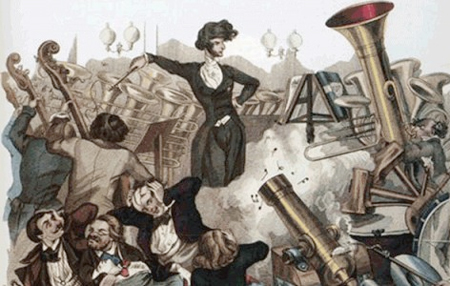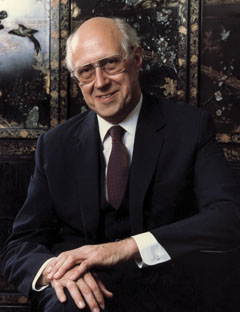by Neil McCalmont

Wherever you have heard classical music — on the radio, in a Bugs Bunny cartoon, or through the piano lessons you may or may not have suffered through as a child — it probably grabbed your attention. It may have been as simple as a pleasant melody or a catchy rhythm, or it may have conjured up an important memory.
By catching your focus, however briefly, the music probably brought out a specific reaction that is different from everyone else’s. Whether this reaction was positive or negative or otherwise is quite personal, and showcases one of the most wonderful properties of music: its subjectivity. We all have unique ways of responding to music, and we develop our tastes for music as we listen to different genres.
While classical music has sometimes garnered a reputation of being “boring,” “stuffy,” or even “dead,” I believe that this is largely due to its age, and thus its perceived difficulty for us to understand in today’s world — rather than being any less enjoyable than other genres of music. The language of classical music can and often does sound different from more contemporary popular music. However, by becoming more familiar with the way this music is written, you can better understand and enjoy it — which is the objective of these articles.
The series surveys fourteen important classical works, exploring the history and importance of each piece, explaining the manner in which it was written, and taking a glance at its composer. Each article will include recommended recordings of the piece, which you can find on iTunes or Spotify, as well as further suggested listening if the piece is one you particularly enjoy.
If you’re listening to a piece for the first time, I would suggest concentrating on whatever jumps out at you — be it a melody, a rhythm or otherwise — and then digging deeper. I hope you enjoy listening to these pieces as much as I’ve enjoyed about them!
Before we begin, I’d love for you to take a look at an excerpt from an essay by the great cellist Mstislav Rostropovich.
“On Listening to Music”

But music is not so aggressive that it will come through to you without your help. In order to feel its warmth and beauty, you have to shed your emotional insulation, just as if it were a coat, and prepare to listen with your heart. The key to finding happiness in music and to understanding it is not knowledge, because the music itself will teach you whatever you need to know. The key is feeling. What a treasure chest that key unlocks! I have been lucky enough to spend my life in the world of music, making it and sharing it with some of the giants of our time, and I know, with all my heart, that every hour spent with great music illuminates the rest of one’s life.
Real, great music should never serve as a background for activities or chores not connected with it. Our world has been cursed with “elevator music.” Waiting in an airport or visiting the doctor or dentist, we are so often beset with canned “classical music.” I have even visited cafés, especially in Japan, that serve classical music as they serve your food. Many’s the time that I would leave, paying my bill for food and drink I had neither eaten nor drunk, because my attention had been captured by the music playing in the background.
The very nature of music makes it a different art: you can’t stand before it, studying and examining it until you understand it. Therefore, if you are doing anything else while listening to classical music, you are distracted and lose the thread of development of the composer’s musical idea. Just as if you were reading a book and skipped every ten pages or so.
Time to unbutton! — NMcC
Click here to read the first article about Johann Strauss II’s The Blue Danube Waltz.
Image at top: Hector Berlioz conducting by J.J. Grandville, 1846.

Published on ClevelandClassical.com May 24, 2016.
Click here for a printable copy of this article



